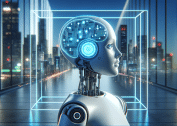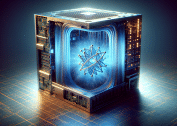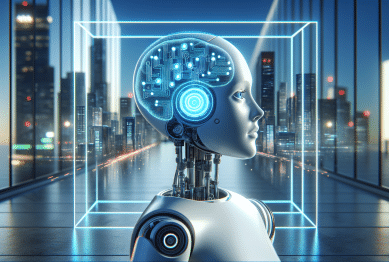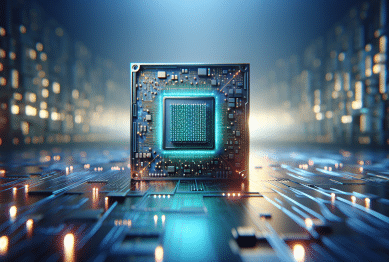Explore how artificial intelligence shapes your everyday experiences. This guide reveals the surprising ways AI, machine learning, and data-driven technology enhance convenience, safety, and efficiency—often without you realizing it. Dive into the world of smart assistants, personalized recommendations, and automation that underpin modern tech life.
The Many Faces of Artificial Intelligence in Everyday Life
Artificial intelligence, or AI, surrounds daily life in remarkable and sometimes hidden ways. Complex algorithms analyze vast data sets to create seamless, intuitive experiences across multiple platforms. When using search engines, cloud storage, or navigation apps, individuals benefit from advances in machine learning and natural language processing. These digital tools are influenced by data-driven systems that interpret your behaviors and anticipate your needs. Various industries now implement intelligent systems—from email spam filters to voice-operated personal assistants. The result? Less friction, more convenience.
Consider the way AI powers facial recognition and image categorization features on smartphones. Behind every automatic organization of photos lies a sophisticated neural network capable of recognizing subtle visual cues. Retailers also harness AI to deliver personalized shopping recommendations, presenting consumers with products tailored to their preferences. Financial technology relies on similar adaptive systems, allowing fraud detection platforms and credit scoring models to operate with speed and accuracy. From banking to entertainment, machine learning transforms the service landscape continuously.
Beyond personal convenience, AI enhances community life and public safety. Smart city initiatives equip traffic management systems with real-time analytics, optimizing traffic light schedules and reducing congestion. On a domestic scale, home automation technology interprets sensor data to adjust lighting, climate control, and security settings—often through a single voice command. These AI-driven improvements demonstrate how invisible digital assistance is baked into daily routines for millions worldwide.
Smart Assistants and Everyday Automation
Voice-activated assistants such as Siri, Alexa, and Google Assistant are now integral to daily routines. These virtual helpers rely on AI-driven voice recognition and natural language understanding to schedule appointments, control smart home devices, and deliver timely information. Machine learning allows these assistants to become more accurate as they learn from user interactions. The result is a smoother, more personalized experience that evolves over time.
Beyond answering questions, smart assistants serve as control hubs for the connected home. Lights, thermostats, and entertainment systems can be managed with simple commands. AI continually optimizes these systems, automating routines such as morning alarms, evening lights, and temperature settings based on patterns detected in everyday behavior. This automation goes unnoticed but brings remarkable efficiency to household management.
Even reminders and productivity tools benefit from artificial intelligence. Calendar scheduling, email sorting, and to-do list management call upon advanced algorithms that filter and prioritize tasks. This invisible layer of automation helps individuals focus on what matters most, reducing cognitive overload. The constant presence of AI turns devices into proactive partners rather than passive tools—forging connections between daily actions and technological solutions.
Personalization: The Engine Behind Your Recommendations
Have you ever noticed how your favorite streaming platform suggests movies and shows that fit your tastes? Recommendation engines powered by machine learning analyze past viewing habits, search history, and even the time spent watching specific genres. These engines do not only boost content discovery—they make entertainment feel uniquely tailored to each user. Music apps, e-commerce sites, and news feeds employ similar personalizations, constantly adapting to preferences for a customized experience.
Personalization extends to social media, where artificial intelligence curates feeds and highlights trending topics that match interests. Every post seen is the result of complex algorithms ranking, filtering, and personalizing content in real-time. Even advertisements are chosen based on analyzed data about browsing patterns, ensuring relevance to the viewer. These systems rely on enormous volumes of user data, all interpreted with remarkable speed by data science models.
Smart personalization goes beyond convenience; it also drives innovation in user safety. Fraud detection mechanisms assess individual patterns across various services and flag anomalies instantly. Personalized health platforms offer targeted suggestions based on user activity and physiology, nudging people toward healthier behaviors. The evolution of AI-powered personalization marks a shift toward deeply integrated technology that adapts not only to wants but also to needs, subtle risks, and real-world behaviors.
AI in Communication and Language Technology
Natural language processing (NLP) is a foundational technology bringing digital communication tools closer to human understanding. Most people encounter NLP every day—spell check in emails, autocorrect on smartphones, and real-time translation in messaging apps all spring from sophisticated language models. These advances stem from ongoing research in computer science and linguistics, with applications spanning business, education, and entertainment.
AI-driven chatbots are increasingly common in customer service, offering rapid responses to common queries and freeing up human staff for more complex tasks. These bots leverage deep learning to understand context, recognize intent, and provide solutions. Virtual agents in sectors like banking or healthcare highlight how AI can be trained to deliver accurate, compliant information with empathy and efficiency, improving accessibility and consistency.
Machine translation technologies break down language barriers between users globally, making resources and communication accessible to more people. From auto-generating subtitles for videos to live transcription services for meetings, AI-powered language tools empower smoother collaboration. Innovations in speech synthesis also provide lifelike text-to-speech services, assisting those with visual impairments or reading difficulties. Language technology powered by AI is reshaping the digital landscape with greater inclusivity and connectivity.
Machine Learning in Safety, Security, and Health
Cybersecurity leverages machine learning to detect intrusions, malware, and phishing attempts before they escalate. These systems analyze vast networks for suspicious activity, often identifying and neutralizing threats in real-time. Face recognition and two-factor authentication built into many devices provide further layers of protection, harnessing AI for secure access control. By processing large volumes of signals, machine learning provides a constantly evolving defense line.
In public safety and health, AI-powered analytics play an essential role in emergency response and disease monitoring. Hospitals use predictive models to allocate resources or detect early signs of outbreaks through real-time data analysis. Wearable health trackers analyze daily activity and biometrics to provide actionable insights, while AI-driven diagnostic tools assist clinicians in making informed decisions based on imaging, genetics, and electronic health records.
AI’s ability to spot patterns within massive, complex datasets enables earlier identification of risks—from financial fraud to health anomalies. As technology advances, frameworks for responsible AI deployment ensure privacy and transparent data use. Ethical considerations now shape the way organizations build and apply machine learning, reinforcing trust. The result is a growing partnership between humans and algorithms for collective well-being and safety.
Smart Devices, IoT, and the Connected Future
The internet of things (IoT) ties together physical devices, sensors, and cloud computing through AI-driven coordination. Everyday items—thermostats, security cameras, refrigerators—are now equipped with sensors that learn and adapt to behaviors. These smart devices communicate with one another, creating data-driven ecosystems that optimize resource use and improve user comfort. This interconnected environment is invisible yet highly powerful, transforming familiar routines.
AI-enabled IoT makes homes smarter by leveraging predictive maintenance and energy efficiency solutions. For example, smart thermostats analyze patterns to reduce heating or cooling costs without sacrificing comfort. In agriculture, IoT sensors collect real-time soil and weather data to support more sustainable farming decisions. Manufacturing plants use smart robotics and automation—guided by AI—to improve production quality, identify defects, and boost safety.
The next frontier of the IoT combines AI with edge computing, enabling devices to process data locally for faster responses and improved privacy. This development opens possibilities in autonomous vehicles, precision medicine, and disaster response. Decentralized intelligence enables cities, industries, and homes to become more responsive and resilient. The future of tech is a web of interconnected, intelligent systems powering daily life in ways once imagined only in science fiction.
References
1. European Commission. (n.d.). Artificial Intelligence. Retrieved from https://digital-strategy.ec.europa.eu/en/policies/artificial-intelligence
2. U.S. National Institute of Standards and Technology. (n.d.). Framework for Managing AI Risks. Retrieved from https://www.nist.gov/itl/ai-risk-management-framework
3. Stanford University. (n.d.). Artificial Intelligence Index. Retrieved from https://aiindex.stanford.edu/
4. World Economic Forum. (n.d.). 5 Ways Artificial Intelligence is Transforming Daily Life. Retrieved from https://www.weforum.org/agenda/2021/09/artificial-intelligence-transforming-daily-life/
5. MIT Technology Review. (n.d.). The Impact of Machine Learning and AI on Society. Retrieved from https://www.technologyreview.com/2020/10/12/1009896/the-impact-of-ai-on-society/
6. National Science Foundation. (n.d.). AI in Everyday Life. Retrieved from https://beta.nsf.gov/news/ai-everyday-life









